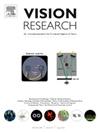Motion upside-down: Response priming with inverted biological primes
IF 1.4
4区 心理学
Q4 NEUROSCIENCES
引用次数: 0
Abstract
The ability to perceive and quickly process biological motion is a key aspect in human information processing that allows for rapid reactions. Previous research demonstrated a strong activation elicited by biological movements as primes in response priming. Research has shown that for biological stimuli in general, a change in orientation can strongly affect perception, information extraction, and attention shifting. However, it is unclear whether motor activation is subject to this influence. The response priming paradigm is a suitable tool in cognitive psychology to investigate motor preactivations in general. Here, two experiments investigate the behavioral priming effects of upside-down presented biological movements on static targets in different SOA-steps. We use two stimuli for biological movements: a dynamic point-light walker (Experiment 1) and a face with a dynamic gaze (Experiment 2). Both stimuli are compared to their upright versions. While with upright biological movements, we replicate strong PCEs in both experiments, an upside-down PLW led to significantly weaker PCEs, suggesting an attenuation of priming effects through inversion. Interestingly, a scrambled-dot condition led to sustained PCEs, suggesting possible preserved local motion trajectories. As to gaze primes, both an upright and an upside-down version produced equally strong PCEs with a decline at a longer SOA. Motor activation elicited by gaze movement direction is sustained and independent from orientation. Our findings show that inversion can affect motor activation in biological motion processing. This influence, however, depends on the nature of the stimulus.
运动颠倒:反应启动与倒置的生物启动
感知和快速处理生物运动的能力是人类信息处理的一个关键方面,它允许快速反应。先前的研究表明,在反应启动中,生物运动作为启动物引起的强烈激活。研究表明,对于一般的生物刺激,方向的改变会强烈影响感知、信息提取和注意力转移。然而,尚不清楚运动激活是否受到这种影响。在认知心理学中,反应启动范式是研究运动预激活的一个合适的工具。在此,两个实验探讨了在不同的soa步骤中,倒置呈现的生物运动对静态目标的行为启动效应。我们使用两种刺激进行生物运动:动态点光步行者(实验1)和动态凝视面部(实验2)。将这两种刺激与直立刺激进行比较。在直立生物运动中,我们在两个实验中都复制了较强的pce,而倒置的PLW导致pce明显较弱,这表明通过反转可以减弱启动效应。有趣的是,乱点状态导致了持续的pce,这表明可能保留了局部运动轨迹。至于凝视质数,直立和倒立的版本都产生了同样强大的pce,但在较长的SOA中有所下降。注视运动方向引起的运动激活是持续的,与注视方向无关。我们的研究结果表明,倒置可以影响生物运动加工中的运动激活。然而,这种影响取决于刺激的性质。
本文章由计算机程序翻译,如有差异,请以英文原文为准。
求助全文
约1分钟内获得全文
求助全文
来源期刊

Vision Research
医学-神经科学
CiteScore
3.70
自引率
16.70%
发文量
111
审稿时长
66 days
期刊介绍:
Vision Research is a journal devoted to the functional aspects of human, vertebrate and invertebrate vision and publishes experimental and observational studies, reviews, and theoretical and computational analyses. Vision Research also publishes clinical studies relevant to normal visual function and basic research relevant to visual dysfunction or its clinical investigation. Functional aspects of vision is interpreted broadly, ranging from molecular and cellular function to perception and behavior. Detailed descriptions are encouraged but enough introductory background should be included for non-specialists. Theoretical and computational papers should give a sense of order to the facts or point to new verifiable observations. Papers dealing with questions in the history of vision science should stress the development of ideas in the field.
 求助内容:
求助内容: 应助结果提醒方式:
应助结果提醒方式:


